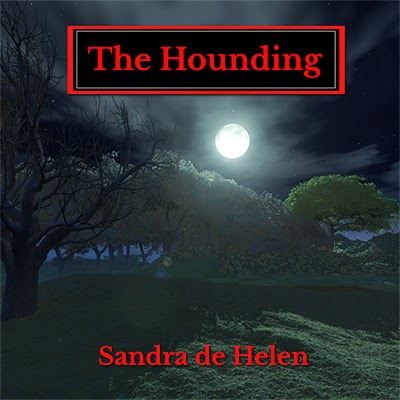Seven
things you may not know about me, Judy Alter, except if you’re my Facebook
friend you probably know all about me. My children tell me whatever goes
through my brain comes out my mouth.
 |
| Sophie |
1. I’m
well known as a dog lover, because I post lost, found, and endangered dogs, but
did you know I also used to raise and train show dogs? I was never very good at
it but I did have a champion Cairn Terrier and a champion Irish Wolfhound (sort of the
same look, way different in disposition and size). Once when I tried to show a
Cairn, a friend said, “Judy, the judge is interested in the dogs’ legs, not
yours.” I gave it up but have had and loved many breeds of dogs over the years,
currently have a Bordoodle named Sophie.
2. I hold a Ph.D. in English with a special interest in the history and literature of the American West; that’s why for many years I wrote fiction about women of the American West.
3. I
spend every weekday afternoon supervising a seven-year-old as he does his
homework. Just ask me about the way they teach arithmetic these days. And don’t
get me started on the difference between a cone and a cylinder.
4. I drive a VW Bug convertible because I didn’t want to be a fuddy-duddy grandmother and drive what my kids call an “old lady’s car.” Besides, I’ve always loved Bugs, driven several over the years—even a camper.
5. Cooking is my hobby, and in another life I’d like to come back as a chef. I love preparing food as much as eating it, and a Saturday in the kitchen is a relaxing day for me. Most recent creations: a lemon potato salad, an overnight green salad with avocado, romaine, garlic, olive oil, lemon and Parmesan, and pickled radishes for my son-in-law who loves them. I also love to entertain and show off my cooking.
6. I have a lifelong anxiety disorder that makes me uncomfortable in a variety of situations—highway driving, self-service elevators by myself, wide open spaces, traveling alone (which is why I miss all those good mystery cons, though I did once go to Bouchercon). In spite of that endless list, I live a full, happy life with plenty of social activity. I’ve been to the Caribbean three times, Scotland once, Seattle, California, New York—so I do travel, even if I don’t love it. I’ve learned to cope over the years—and plan ahead—and I rarely have panic attacks.
7. Although I’ve lived in Texas fifty years this July, I’m a northerner, born and raised in Chicago, which still makes me, as some Texans see it, an outsider. I wouldn’t go back to Chicago, and I love most aspects of life in Texas, especially the colorful history. There are a few contemporary things I’d change.
About Murder at Tremont House
When free-lance journalist Sara Jo Cavanaugh comes to Wheeler to do an in-depth study of Kate’s town for a feature on small-town America, Kate senses she will be trouble. Sara Jo stays at the B&B, Tremont House, run by Kate’s sister, Donna, and unwittingly drives a further wedge into Donna’s marriage to Wheeler’s mayor Tom Bryson. And soon she’s spending way too much time interviewing high school students, one young athlete in particular. Police chief Rick Samuels ignores Kate’s instinct, but lawyer David Clinkscales, her former boss from Dallas, takes it more seriously.
Sara Jo arouses animosity in Wheeler with the personal, intrusive questions she asks, and when she is found murdered, the list of suspects is long. But Kate heads the list, and she must clear her name, with the help of David and Rick. A second murder confirms that someone is desperate, and now Rick is convinced Kate is in danger.
There’s a love triangle, a cooking school, a kidnapping, a broken marriage, and a lot of adventure before the threads of this mystery are untangled, and Wheeler can go back to being a peaceful small town. If it ever does.Recipes included.
Murder
at Tremont House is
the second Blue Plate Mystery from award-winning novelist Judy Alter, following
the successful Murder at the Blue Plate
Café. Judy is also the author of four books in the Kelly O’Connell
Mysteries series: Skeleton in a Dead
Space, No Neighborhood for Old Women, Trouble
in a Big Box, and Danger Comes Home. With
the Blue Plate Murder series, she moves from inner city Fort Worth to
small-town East Texas to create a new set of characters in a setting modeled after
a restaurant that was for years one of her family’s favorites.
Follow
Judy at http://www.judyalter.com or her
two blogs at http://www.judys-stew.blogspot.com
or http://potluckwithjudy.blogspot.com.
Or look for on Facebook at https://www.facebook.com/#!/pages/Judy-Alter-Author/366948676705857?fref=ts
or on Twitter where she is @judyalter.
Before turning her attention to mystery, Judy
wrote fiction and nonfiction, mostly about women of the American West, for
adults and young-adult readers. Her work has been recognized with awards from
the Western Writers of America, the Texas Institute of Letters, and the
National Cowboy Museum and Hall of Fame. She has been honored with the Owen
Wister Award for Lifetime Achievement by WWA and inducted into the Texas
Literary Hall of Fame at the Fort Worth Public Library.
.jpg)

.jpg)



























